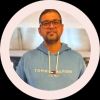New Delhi: The Chief Justice of India (CJI) D Y Chandrachud on Tuesday, noting that the capital has experienced two heat waves followed by record-breaking rain on a single day, said “climate change can no longer be ignored”, and stressed, “one crucial step is to incorporate a green lifestyle into our daily lives, which includes reducing carbon emissions”.
The CJI was speaking at the foundation stone laying ceremony for the construction of court buildings at Karkardooma, Shastri Park and Rohini. “This year Delhi experienced the hottest recorded weather. We have experienced two heat waves followed by record-breaking rain in a single day. Our infrastructure must reflect the reality we live in - Climate change can no longer be ignored”, said the CJI.
“One crucial step is to incorporate a green lifestyle into our daily lives, which includes reducing carbon emissions. I was delighted to know that the new buildings will focus on heat island mitigation and reduce environmental footprint”, he added.
CJI invokes physicist Stephen Hawking
The CJI said accessibility measures are not annexes or afterthoughts to a building but an inherent structural consideration and added that he is reminded of a story where disability rights groups had been requesting for accessibility measures at India’s historical monuments.
“When Stephen Hawking, the great physicist and cosmologist came to India, he wished to see Indian monuments. To enable his movement, temporary wooden ramps were installed at four historical monuments. It is believed that if you touch the Qutub Minar and make a wish, it comes true. When Stephen Hawking was asked what he wished for at Qutub Minar he said that ‘I wish when I leave, these ramps remain’," said the CJI.
Court premises made of hope not just bricks and concrete
The CJI stressed that court premises like all buildings are not just made of bricks and concrete and they are made up of hope. “Courts are made to realise the virtues of justice and the rule of law. Every case that is being filed before us, is with that hope for justice. When we invest in the safety, accessibility and comfort of our judges, lawyers and litigants, we build more than just an efficient system – we make a just and inclusive system”, he said.
The CJI said courts engage in rigorous discussions and arguments over legal principles and their application to specific cases. “Judges carefully deliberate on the merits of each side's arguments before reaching a decision, ensuring a thorough and balanced examination of the issues at hand. Much like how the cornerstone of buildings shape its structure and orientation, the cornerstone of justice and equality must shape the orientation of the court’s approach to cases”, he said.
Courts guardian of foundational virtues
The CJI said our legal and constitutional system is fundamentally premised on the virtues of justice, liberty, equality, and fraternity, and courts are the guardians of these foundational virtues. “The foundation of a court must be sound – both in its structural and philosophical capacity. It must subserve no might but the Constitution and be in service of no one but the litigants. Our courts are not merely sights of sovereign power but are also essential public service providers”, he said.
The CJI said Karkardooma was the first court to be equipped as an e-courts in 2010 and it will now have state-of-the-art facilities which are environmentally conscious, justice-oriented and accessible.
“This morning, we lay the foundation stone of new buildings at Karkardooma, Shastri Park and Rohini. Traditionally, the cornerstone or the foundation stone is the first stone of the building which becomes the reference point for all other bricks to be laid in the course of its construction”, he said.
The CJI added that it determines the structure, orientation and direction of the building – attributes of significant and long-ranging consequences.
“Firstly, they would expand the capacity of the court to function over one of the most populous jurisdictions in the NCT of Delhi. They would alleviate case backlogs and provide a dignified environment to all stakeholders”, he said.



